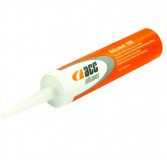
Most electronic components produce heat when in use. The
unwanted heat has to be dissipated away from the components to
maintain performance and avoid premature failure of the
components or device. The need for efficient transfer of heat has
become a key design requirement as components continue to
reduce in size and increase in power, this is particularly apparent
with microchip processors, LED’s and power packs.
Designs will vary but in essence all involve some form of heat sink to
dissipate the heat away from the active components. It is the
interface between the heat sink and component that calls for the use
of thermal transfer compounds, without their use any air gaps that
exist will act as an insulator and prevent heat escaping.
These transfer materials come in a wide variety of forms; liquid adhesives, pastes, gels, potting compounds,
sheets, rolls, pads and sprays. They also utilise an equally large array of chemistries. Choice of material will be
driven by a combination of factors including:
• Thermal requirements
• Manufacturing processes
• Environmental operating conditions
• Need for additional functionality
We will not endeavour to cover all the options available but will focus on the use of silicones as a base for
manufacturing performance heat transfer compounds.